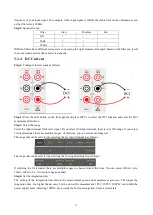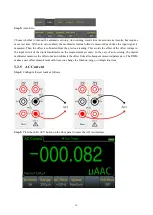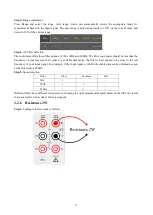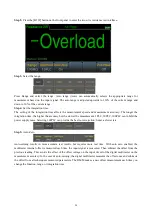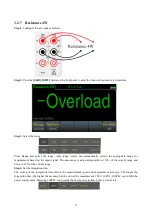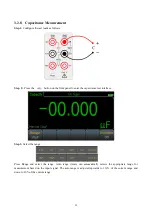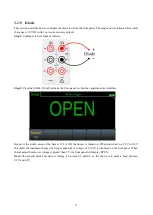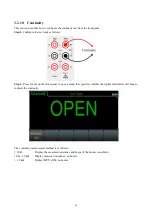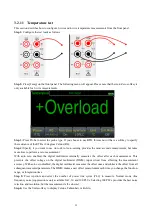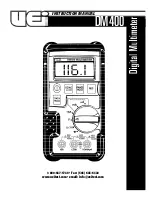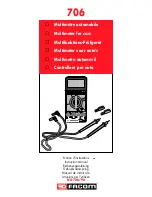
10
Additional gating error
Frequency
1
sec.
0.1
sec.
0.01
sec.
2-10Hz
0
0.200
0.200
10-100 Hz
0
0.060
0.200
100Hz-1kHz
0
0.020
0.200
1-300kHz
0
0.004
0.030
300kHz-1MHz
[15]
0
0.004
0.030
Square wave
[16]
0
0
0
[1]. For DC: The technical specifications are valid when the instrument has preheated for 60 minutes, the
integration time is set to 10 or 100 NPLC, and auto zero is enabled. For AC: The technical specifications are valid
after 60 minutes of preheating, slow AC filtering, and sine wave.
[2]. Outside the range of TCAL ± 5 °C, the temperature coefficient is increased by 1 for every 1 degree Celsius
change.
[3]. Relevant calibration standards.
[4]. The smallest data change that can be displayed, i.e. the value of the least significant digit.
[5]. Full-scale accuracy, there is need to perform NULL (clearing) operation in order to get better accuracy.
[6]. DC 1000V, AC 750V, AC current 3A and DC current 3A can only test 5% of the overrange.
[7]. When measuring resistance, it is better to use shielded line test when the resistance is greater than 100kΩ.
Because the intersecting magnetic field generates an induced current, and a large resistor has a relatively small test
current, the signal-to-noise ratio will be small and the test will be unstable.
[8]. Specifications are applicable to 4-wire or 2-wire resistance measurements. When zero clearing is not activated,
the 2-wire resistance measurement will introduce an additional error of 0.2Ω.
[9]. Specifications are valid when the sine wave input is >0.3% of the range and greater than 1mVrms. The
750-ACV range is limited to the 8 x Volt–Hz range.
[10]. Low Frequency Performance: three filter settings are available: 3 Hz, 20 Hz, 200 Hz. The frequency above
the filter setting is specified and no additional errors will occur.
[11]. Specifications are valid when sine wave input >1% range and >10μA AC. The 10A range is only available on
the front connector.
[12]. Specifications are applicable to the voltage measured at the input terminal. The 1 mA test current is a typical
value. A change in the current source will cause a change in the voltage drop across the diode junction.
[13]. Unless otherwise stated, the specifications are valid when the instrument has warmed up for 60 minutes and
has a sine wave input. Specifications apply to 1s strobe time (7 digits). The signal needs to be greater than 10% of
the selected range.
[14]. This is applicable when the sine and square wave are input larger than 100 mV. For a 10 mV to 100 mV
input, multiply the % of the reading error by 10.
[15]. High-frequency signals have serious attenuation in the latter stage, so the input voltage of the test signal
should be relatively large. The test signal is 1V-1MHz, and the input signal is preferably greater than 50% of the
range.
[16]. The square wave input is specified as 10 Hz-300 kHz.

















